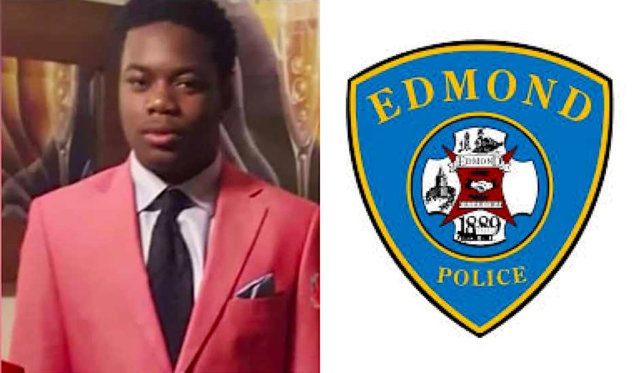The inauguration of a new Edmond mayor and two new councilmen should receive extra attention this evening in the aftermath of 17-year-old Isaiah Lewis’ death at the hands of Edmond police. While investigations are ongoing, incoming city leaders would do well to acknowledge what appears clear: The city should commit to providing body cameras for all of its police officers.
Edmond police encountered Lewis on Monday, April 29, in an apparent psychotic state, naked and unresponsive to commands after scaring his girlfriend, running through a neighborhood and entering a stranger’s house. The department has said officers used a Taser before fatally shooting Lewis.
Waiting along with media and the public for official reports related to Lewis’s death, the young man’s family, members of Oklahoma’s Black Lives Matter chapter and Oklahoma Artists for Justice have called for greater de-escalation training for officers and across-the-board implementation of body cameras by the Edmond Police Department.
Such a call seems reasonable, as questions about exactly what happened to Isaiah Lewis would be more easily answerable had the two Edmond officers involved in his death been equipped with body cameras.
Report: Edmond police have only four body cameras
In November, Josh Dulaney of The Oklahoman reported that the Edmond City Council approved the purchase of “23 cameras, nine of which will replace old technology and the remaining 14 held for police recruits set to graduate Feb. 1.”
On Saturday, May 4, Josh Wallace of The Oklahoman reported that the department currently uses only four body cameras. Neither Sgt. Milo Box nor officer Denton Scherman was wearing a body camera when he followed Lewis into the home. Box has 25 years of law enforcement experience while Scherman has less than one year, according to BuzzFeed.
Minutes before the shooting, an Edmond PD dispatcher was told by the 18-year-old who identified herself as Lewis’ girlfriend that there were “no weapons involved.” It’s unclear whether Box and Scherman received that information.
“You guys can come and check it out,” the young woman told the dispatcher, who had been called by a neighbor.
She said her boyfriend had “flipped out,” and the dispatcher received another call that Lewis was running through an Edmond neighborhood and along a local creek while wearing only a pair of socks.
After Lewis exited a wooded area and entered a residence, Box and Scherman were reportedly nearby in an unmarked vehicle, ultimately entering the house and engaging Lewis in a physical altercation. A Taser and gun were fired. Lewis died, and one of the officers was reportedly treated for a head injury.
“We need to hear the accounts that happened inside the house from them,” Jenny Wagnon, Edmond Police Department spokeswoman, told KFOR. “We’re having to work off the evidence. We are having to work hard to be as transparent as we can through the process, and it just doesn’t move as quickly as everyone would like it to.”
Body cameras are objective third parties
Wagnon’s statement above underscores the need for across-the-board body cameras on Edmond police officers in the field. As investigators — and potentially the Oklahoma County District Attorney’s Office — review “evidence,” their jobs would be easier if body camera footage of the tragic situation existed.
Likewise, members of the Lewis family and other concerned citizens would likely find it easier to consider the investigation “transparent” if such footage existed.
We have written before about how communities benefit from having all police officers equipped with body cameras — which serve as an objective third party during controversial interactions. As investigators look into the death of Lewis, a specific point is worth underscoring again: Body cameras can help police officers as well, corroborating their accounts after controversial events.
With Edmond police reportedly already sharing the use of four body cameras, city officials have evidence that the technology works, even if it requires a financial commitment for storage and other equipment costs. Days before Lewis’ death, Edmond police released body camera footage that showed the end of a police chase where a man terrified women, one of whom said her opinion of police changed after being rescued during the hostage situation.
“The move into the body cameras has been deliberate, not because we don’t believe in them, but we’ve been making sure the technology is something we can support and integrate with our already existing infrastructure,” Edmond Police Chief J.D. Younger told The Oklahoman in November.
Younger also apparently referenced the Oklahoma City Police Department’s lengthy disagreement with the OKC Fraternal Order of Police over body camera policies, one of multiple hurdles that left OKCPD without across-the-board body cameras for years after the department had publicly committed to the standard.
“What we hope we’ve done is learn from our partners, to hopefully avoid some of the growing pains they’ve gone through,” Younger said in November.
Unfortunately, the painful death of Isaiah Lewis has underscored a growing need for body cameras across the country. The City of Edmond ought to outfit its police officers with body cameras sooner rather than later.






















